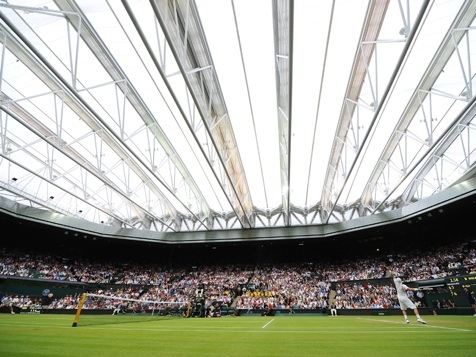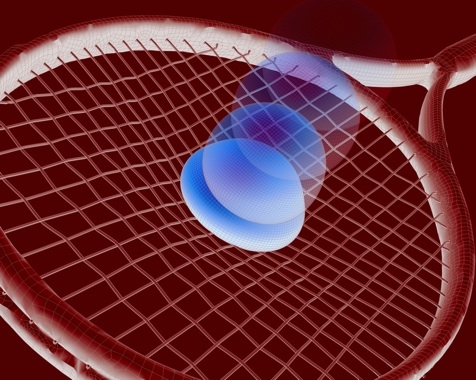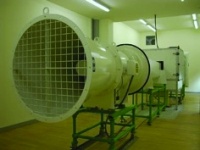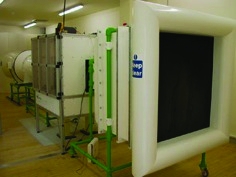It’s summer and Wimbledon is here. The visible side of the game is of tennis whites, grunting power serves (both men and women) and pristine lawn turning to parched soil. Don’t think that this happens by chance; after all, the All England Croquet and Lawn Tennis Club have had since 1877 to get it right. Behind the scenes, as well as good organisation there is an array of science, engineering and technologies that go into creating, monitoring and generally looking after the modern game.

About 15 years ago, in 1996, I was approached by the International Tennis Federation (the ruling body of tennis worldwide and based in London) to discuss the possibility of doing some research on tennis. The issue for the game at that time was its “speed”. There was a perception that the game was dominated by the serve and that volleying was becoming a dying art. The cause was commonly attributed to the relatively new carbon fibre tennis rackets that were starting to feed into the elite game. It should be remembered that rackets hadn’t changed for around a hundred years and were based upon the original wooden frames with gut stringing designed by innovative furniture makers of the 1870s.

As a response to this, the ITF asked how the game could be slowed down and needed research to understand the consequences of any change. It might sound a relatively simple task but in a game that has been around for so long, empirical evidence was ubiquitous, anecdotal and yet lightweight. In short, everyone from players to officials to scientists had an opinion.
Fast forwarding to 2011, it is good to look back to see how we’ve progressed. The ITF now has one of the best tennis research labs in the world: a bespoke wind tunnel, racket performance machine, equipment for measuring the friction of surfaces, for tracking players during a game, and even the wear of the tennis ball after a match’s worth of shots (suprisingly only around 40 impacts per ball after 7-9 games).
The design and build of all this equipment was no mean feat; I know because we made, installed or tested a lot of it. The understanding of the aerodynamics of a tennis ball required a wind tunnel to simulate what is experienced in play, i.e. spin of around 5,000 rpm at wind speeds of over 150 mph. The ball is mounted on a horizontal axis across the air flow, driven at one end by a motor and with a delicate load cell at the other capable of measuring lift and drag to fractions of a Newton.


The racket performance machine, known as MYO (Greek for muscle), mimics a serve and the engineering design shows how complex the action of the player is. The racket is driven about a horizontal axle by a powerful motor (with the handle at the axis) in the manner of a flat serve and a ball dropped from a chute vertically above to hit the face of the racket as it rotates past. The racket projects the ball through a set of light gates which then measures its speed. The timing of the ball drop is adjusted to get the ball to impact with different parts of the racket much as a player does and has now produced enormous amounts of data on rackets, balls and even strings. It can be seen in action here.
What these, and other pieces of equipment give the ITF is the means to understand the game and to measure directly how any new pieces of equipment might affect the game. And how do they do this? About 1999, we came up with the idea of Tennis GUT (rather tongue-in-cheek GUT stands for Grand Unified Theory – a bit of a physics joke). This software integrates all the work on racket impacts with ball aerodynamics and surface impacts using non-linear Newtonian mechanics. This allows us to choose any ball, any racket, any surface and any shot on a tennis court and gives a quick and easy way of shortcutting the experiments of the last 15 years. For instance, I used it recently to work out what the effects of closing the roof of Wimbledon’s Centre Court would be to try and understand the comments coming from players that the ball slowed down once the roof was shut.
You might still be wondering what the answer was to slowing the game down in the 1990s. After looking at options such as raising the net and moving the lines of the court, a larger ball was introduced into the rules of tennis. With a 6% larger diameter, it slowed a typical serve and gave the receiver a few hundredths of a second extra to get a return. You might not have noticed because it wasn’t used much; players adapted to the higher speeds and the need for change recovered. The rule, however, is still there if you look and ready when needed.
So, as you watch Wimbledon, remember that the game is subtly engineered to give you the game you want.





First seven members join NG’s Great Grid Partnership
So in addition to (as seems likely) Great British Energy & Great British Railways we also have the Great Grid Upgrade To me, this rather … grates?